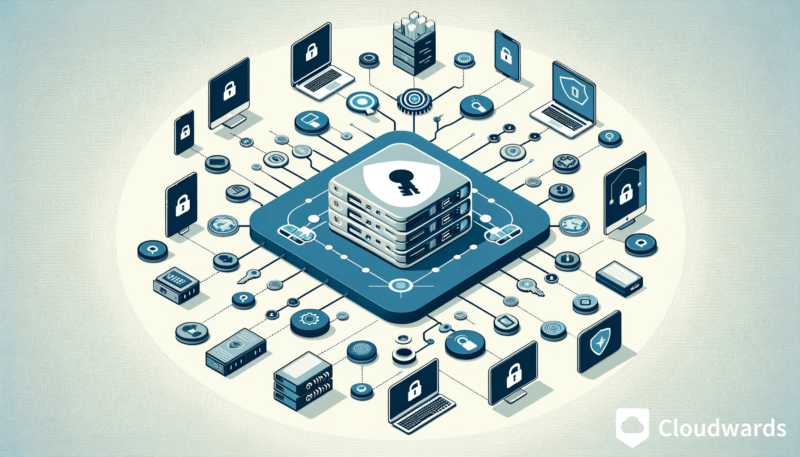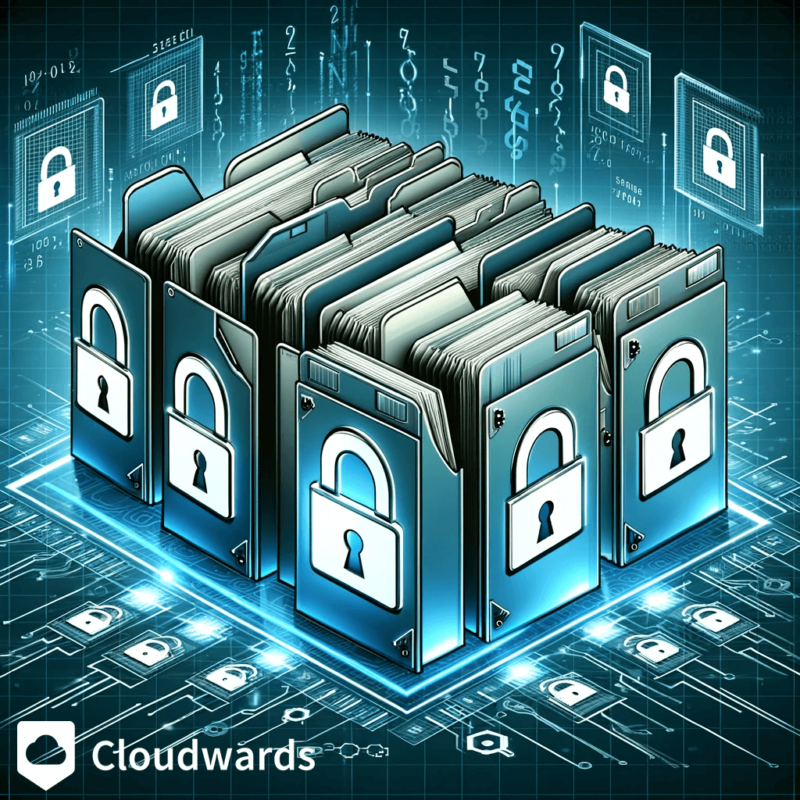Key Takeaways: Zero Trust Security Architecture Explained
- Zero trust security is based on the principle of “never trust, always verify.” Due to the advent of the internet of things (IOT) and remote work, it’s a necessity in modern corporate networks, where multiple device types may be remotely connected to the network.
- A zero trust cybersecurity strategy relies on strong authentication methods to provide secure access to corporate data.
- Zero trust security solutions must also implement network segmentation. In other words, no user should be able to access the entire corporate network, and they should only have access to data needed to perform their role.
- This makes gaining access to the whole corporate network much more difficult, as an attacker can only access a portion of the network, even if they were to gain access to an employee’s account.
Today’s online threat landscape is far more dangerous than ever, especially with companies’ recent reliance on remote work. Yet many organizations still rely on traditional network and data management models. Zero trust security is a modern method of managing employee access to sensitive data, and it’s going to be the topic of discussion for this guide.
Older models, such as the popular castle-and-moat security framework, work by allowing only verified users and devices to access company data. Unfortunately, these models often fail to protect data from internal threats, as they presuppose that all employees can be trusted. In contrast, a zero trust framework minimizes risks to the security of company data by restricting user access to the bare minimum their role requires.
Our security experts here at Cloudwards are firm believers in the zero trust model, so much so that we implement it ourselves to manage our company’s data. This article will explain the concept of zero trust security and outline its implementation based on our hands-on experience in network security. We’ll also link to academic sources along the way for further reading.
What Is Zero Trust Architecture?
The zero trust security strategy relies on the principles of least privilege access and network segmentation. This means that if an employee doesn’t need access to certain files to do their job, they won’t be able to access them. They might even be operating within a contained data silo, with no way to access other parts of the network without explicit consent from an administrator.

the least access possible to each user.
The zero trust security framework assumes that no employee can be trusted with sensitive company data and that they should only be able to access the resources they need to perform their job.
This way, even if an employee’s account gets hacked, the attacker will only be able to access the project said employee is working on. In techy terms, it prevents a hacker from moving laterally across the network.
This approach also helps to minimize the risk of internal data leaks. According to our cybersecurity statistics, 36% of data breaches came from internal actors for companies with over 1,000 workers, while that number rises to a whopping 44% for smaller companies. This is why it’s crucial that you never assume that anyone can be trusted with full network access.
The 5 Zero Trust Pillars
The classic model of zero trust network architecture is based on the five zero trust principles, or pillars. These pillars are identity verification, device security, network and environment, data security, and applications and workload. You might find these listed under different names, but the core principles remain the same.
1. Identity Verification

each person attempting to access company data.
The first and most important pillar is identity verification: A company must always know its employees and verify that it’s actually them attempting to access the network.
Implementing strong user identity verification methods, like multi-factor verification (or two-factor authentication), is a must to validate users. This is doubly true for privileged accounts that can access more sensitive data.
2. Device Security

A compromised device on a company network can be disastrous, which is why the organization must restrict access to remote devices, especially non-company mobile devices. According to a paper published in the Information Systems Frontiers journal, ultra-fast 5G networks will create a future internet of things (FIOT) that will push remote work even further, necessitating increased device security.
3. Network & Environment

The security of a network is at the core of zero trust architecture. Controlling the network perimeter is paramount to its security, and properly segmenting a network is crucial for implementing zero trust.
4. Data Security

Data is among a company’s most critical assets, and as such, protecting the data itself, regardless of where it’s stored or its network location, is the main purpose of zero trust. This includes classifying data by sensitivity, encrypting it and ensuring proper access control.
5. Applications & Workload

Application and workload security is the final zero trust pillar. Applications must be developed with security in mind, and a thorough zero trust assessment must include proper vetting of applications used by employees to ensure your data doesn’t fall prey to a vulnerability in an application.
As an example, in 2023, Samsung suffered a data breach that leaked important source code due to an employee using ChatGPT. If a proper zero trust strategy had been implemented, including continuously monitoring data access and securing applications and workloads, this could have been prevented.
How to Implement a Zero Trust Strategy
Zero trust implementation is a bit more complicated than older network security strategies, but there are applications and services that can do the job for you, including EFSS services like Egnyte Connect.
According to the book Zero Trust Security: An Enterprise Guide, every zero trust system consists of several distributed subsystems with their own policies, as well as a central policy decision point (an administrator). This is a simplistic overview of the system, but it goes a long way toward demystifying it. The steps below will help you implement your own zero trust strategy.
- Visualization: The first thing you need to do is decide what data each employee should access. Risk judgment, trust assessment and access management are the three most important aspects that you need to take into consideration.
For example, if your company is split into teams working on different projects, you might want to separate each team into their own data silo, and then separate each role within the teams. You can even go so far as to reduce access to individuals who have very narrow roles, such as contractors, who don’t need access to any company data beyond their work files.
- Mitigation: If you have suffered a threat, it’s imperative to detect it and mitigate the damage as soon as possible. Setting up detection systems is the first step towards future prevention, but you should also learn from previous breaches to see how you can better optimize your structures.
- Optimization: Once the damage from a breach has been mitigated, or a vulnerability has been discovered, you need to figure out how to prevent such a breach in the future. For example, if there was a weak spot that affected a particular data silo, consider changing that silo’s structure and implementing proper network segmentation and access control.
NIST Guidelines on Zero Trust Architecture
The National Institute of Standards and Technology expands these three points to seven key tenets in its NIST 800-207 standard.
- All data is considered a critical asset.
- All communication must be secure, even if it’s within a trusted network.
- Access to data should be restricted by session.
- Access policies should be dynamic and respond to shifting environmental factors.
- The company must continuously monitor and assess the security of all its assets.
- Access to data should be dynamic, with access permission changing on a case-by-case basis.
- The company must collect as much data as possible about the status of its assets in order to ensure the security of its networks.
The History of Network Security
Castle-and-moat: In the days of yore, network security was often a lot simpler. You could simply lock people out of the corporate network, choosing to trust everyone on the inside, since all the connected devices would be physically present in the office at all times. This is the principle that the so-called castle-and-moat security strategy was built on.
This was all well and good, until the internet of things happened and most people started using mobile devices, like smartphones, tablets and laptops, for work. Suddenly, there was a need for secure remote work.
Trust-but-verify: In comes the virtual private network, or VPN for short. A VPN allows remote devices to access the company server, but this opened up a whole can of worms that had to be dealt with, as access from devices physically located outside of a network is difficult to control.
This is why the paradigm of trust-but-verify was created. Named after an old Russian proverb, this model was reliant on user identity. In this model, trusted users are automatically granted access to all parts of the network upon verifying their identity.
This was sufficient for a while; users could log in to their company’s VPN remotely and work from anywhere. However, if someone happened to fall prey to a phishing scam, all company files could be lost.
The Creation of the Zero Trust Model
It’s easy to see why zero trust security architecture was needed. With the advent of laptops, smartphones and tablets, people have been increasingly working from home. According to our remote work statistics article, 50% of the U.S. workforce was remote in 2020 (a certain pandemic played a large part in that), and most of those people had very little cybersecurity training.
This meant that even with a secure web gateway, like a VPN, there was no way to secure access to company files. That is, unless people could no longer access every file on the server. Thus, the zero trust model was born.
Why Zero Trust Is Better: Benefits of Zero Trust Architecture
- Protecting remote worker data: Remote work powered by ultra-fast 5G connections makes the internet of things potentially dangerous to an organization’s network, and a zero trust solution goes a long way toward mitigating any potential dangers.
- Protecting sensitive medical data: As one of the strongest data security strategies, it’s particularly useful for medical organizations that need to comply with HIPAA regulations, as this paper from Zhengzhou University shows.
- Protecting intellectual property: In an example we gave, we saw a Samsung employee leak some of the company’s intellectual property due to improper application security assessment. A zero trust strategy can prevent incidents like this from happening by ensuring continuous assessments of data access and network management.
Drawbacks of Zero Trust Network Access
- More complex implementation: A zero trust strategy can be complicated to operate and manage. With so many moving parts, it needs a dedicated team of content administrators to keep everything running smoothly.
- Higher cost of operation: Hiring entire data security teams might not be within everyone’s budget. Zero trust doesn’t need to be expensive, of course, but the larger a company is, the more complex its security strategies must become, and the higher the cost of maintaining those strategies will be.
Final Thoughts: The Zero Trust Security Model
We hope this guide has helped you on your company’s zero trust journey. Implementing a zero trust security model can be complicated, but it’s necessary to prevent data leaks, especially from internal sources.
Were you familiar with zero trust security? How does your company implement network security? Have you had any experiences with zero trust networks that you’d like to share? Let us know in the comments below, and as always, thank you for reading.
FAQ: Zero Trust Security Explained
-
In contrast to the old principle of “trust, but verify,” the zero trust cybersecurity model operates on the principle of “never trust, always verify.” This means that no user or device on a company network can be trusted and they must always ask for access to data.
-
Older network security models relied on securing the network perimeter, i.e. no one outside the network could access company data, but internal users could access everything. In zero trust network access (ZTNA), users can only access the part of the network that’s relevant to their role.
-
Zero trust security policies can be complicated, but here’s a quick and easy example. You have a company cloud storage that remote workers can access. To make it zero trust, you only give each user access to their own folder, and each time they want to log in, they need to use two-factor authentication. There’s more to it than that, but this should get you part way there.
-
The five pillars of zero trust are: identity, device, data, network, and applications and workload.
-
The principle of least privilege means that no employee can have full access to the network, and they can only operate within a segment of it. Granting access to another segment should require verification from an administrator.
The post What Is Zero Trust Security and How Does It Work in 2024? appeared first on Cloudwards.

